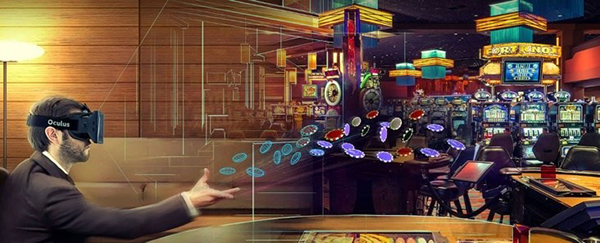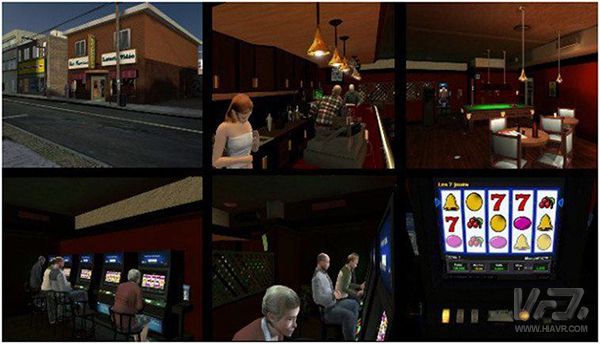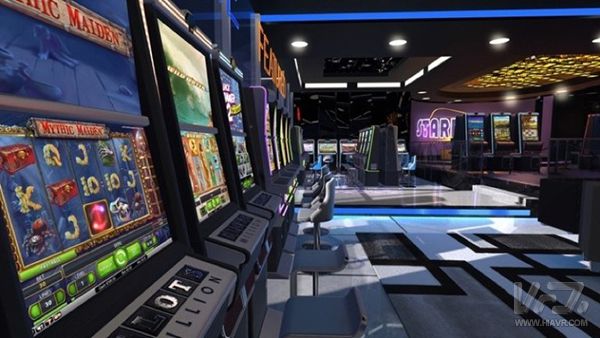Do not take injections, do not take medicine, not even electrotherapy VR will become a new lifesaving straw for countless gamblers

VR technology has always been known as the "future technology," but as it matures, more and more people are involved in social, entertainment, and even training work. However, since they are well-known, they must be questioned. Many people now worry that this emerging technology may be addictive and overly addictive.
However, instead other people are using VR technology to help people quit this "addiction."
For the gambler, there is a successful case: Stephane Bouchard of the University of Quebec Cyberpsychology Laboratory.
Bouchard has studied VR technology for nearly 20 years. Before that, he developed a VR application to help gamblers face and overcome their obsessive-compulsive disorder. So far, his team has achieved very effective results - their success rate of healing up to 60%.
This therapy is based on cognitive behavioral therapy (CBT), a behavior-based psychotherapeutic therapy that works in conjunction with VR technology. It is also a way for the therapist to directly understand the gambler's mood and thinking patterns.
The therapist first encourages patients to talk about their gambling addiction incentives, and what kind of circumstances will trigger their gambling impulses, and as far as possible in the heart imagine the patient in the casino.

However, sometimes patients do not have self-consciousness or imagination, and they cannot mentally imagine the incentives that cause gambling desires, and they cannot place themselves in gambling situations. Also, each therapist would not want to take his patients to a real casino and put them in a situation where they have troubled themselves.
At this time, VR technology can reflect its value:
When the patient wears VR glasses, they will come to a casino environment that is real enough to see familiar scenes and familiar sounds in their ears, all of which are related to gambling. Similarly, patients can walk around, watch and use on different gambling machines, and even take out virtual currency from ATM machines.

When they interact in this new and familiar environment, the therapist can see what the patient does in it and can ask questions about what's happening in their minds and things. Through this, the therapists can observe the most excited patients in what special circumstances, and thus make plans to control their gambling addiction that they cannot control.
Similarly, VR glasses will also be used to help patients further improve their self-control and behavioral awareness to avoid the relapse of gambling.
Bouchard said: “In my treatment career, there are not a few cases of recurrence. When patients face a real slot machine, their self-control will become more difficult. In other words, if you can feel in a VR environment, Strong gambling impulses, then imagine what happens if the patient really faces the casino?â€

According to Bouchard's description, the therapist can adjust the VR environment according to the patient's condition. If the patient's gambling addiction is very large, the therapist can slowly introduce the patient into the VR world setting. Such as lowering the noise level, reducing the number of slot machines, reducing the number of gamblers in the casino, and making the environment more gentle. If the gambling addiction is small, the therapist can increase the intensity of the VR experience. In real casino environments, therapists have no control over environmental variables, and the unpredictability of real casinos makes treatment more risky.
"My goal in the future is: My patients can really learn to control their own impulses, control themselves, if they can even completely quit the gambling addiction. However, all of these must be practiced, VR technology in this process is fully Played its role."
Although the results of the clinical trials were very surprising, whether or not these results can be truly reflected in real life? Bouchard said yes, although the patients knew deep inside that they were not in a real casino, their behavior was still sufficient. Close to the real world.

"Gambler and gambling have different special emotion ties from others. If I present to ordinary people our virtual casino environment, I believe that others will definitely comment immediately on its lack of realism and details," Bouchard said. "But if it is presented to gamblers, they will evaluate the virtual casino in their perspectives and emotions: what gamblers see is the possibility of winning, and the projects that they intend to participate in this casino." Actually looks like most people, but such scenes obviously ignite their brains and make them feel like they are in real gambling.
On the other hand, the negative impact of VR technology is also often talked about: motion sickness, nausea, and heartbeat caused by FPS games such as "Resident Evil 7". Even worse, virtual reality technology may further affect the brain. .
So, will realistic virtual gambling relapse to patients who have already taken gambling?

“There was no recurrence in previous VR treatment cases,†Bouchard said. “As a therapist I can say with certainty that this is not a major clinical and ethical concern, but we must also avoid this situation at all times.†occur."
According to the survey, as many as 2 million people in the United States are pathological gamblers, and with the global gambling laws becoming more lenient, this phenomenon will intensify in the future. If VR can really help treat gambling addiction, it definitely deserves our attempt.
In addition to the fact that virtual reality technology can help gamblers to quit gambling addiction, the success rate for treating anxiety disorders is as high as 80-85%. Similar projects have also been used to treat schizophrenia, eating disorders, traumatic stress disorder and so on.
This article is original by VR net, please indicate VR net and chain back.
Educational projectors are mainly aimed at classroom teaching by school teachers; traditional projectors are not easy to carry. Due to the naughty students in school classrooms, projectors are not safe to place in classrooms and are easily damaged by students. The portability of educational micro-projectors makes up for teaching Vacancy, it is convenient for teachers to give lectures and only need to store the materials in the projector and show them to students for teaching, saving the trouble of textbooks and handwriting with pens and chalks. Its general weight will not exceed 0.2Kg, and some do not even need fan cooling or ultra-small silent fan cooling.
Educational projectors need to have:
1. Clear handwriting Educational projectors most often display text and images, at least a resolution of 1024*768 or more, and a contrast ratio of more than 3000 lumens, so that students in the back row can see the projection clearly
2. Short-focus large screen;
3. Accurate color;
4. Easy operation;
5. Features such as multiple connection methods.
education projector,education use projector,smart education projector,best education projectors,projector for education
Shenzhen Happybate Trading Co.,LTD , https://www.happybateprojectors.com